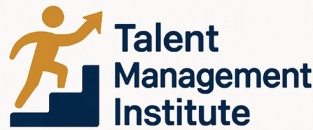
Understanding the Concept of Skill vs Will
Exploring the Skill-Will Relationship
In the realm of talent management, understanding the interplay between skill and will is essential for optimizing team performance and enhancing employee development. It is an established concept that an individual's skills and will to perform a task can directly influence their output and contribution to a team. This dynamic is often represented in a matrix with quadrants categorizing employees: high skill, high will; high skill, low will; low skill, high will; and low skill, low will.
Each quadrant offers unique challenges and opportunities for managers aiming to maximize the potential of their teams. Let’s take a closer look:
- High Skill, High Will: These team members are a great asset, showing both competence and motivation. Their performance is generally strong, and they often require less micro-management. Managers should focus on challenging these employees with development opportunities.
- High Skill, Low Will: Despite having the necessary skills, these individuals may lack motivation or interest, impacting their overall performance. Identifying the reasons behind their lack of motivation is crucial. It could range from personal reasons to misalignment with the organization's culture or leadership style.
- Low Skill, High Will: Team members in this quadrant show enthusiasm and willingness to improve, although they may still be developing their skills. They are prime candidates for targeted skill development plans that leverage their eagerness to learn.
- Low Skill, Low Will: Employees in this category may need extensive support. The combination of inadequate skills and lack of motivation requires identifying the root causes, providing appropriate training, and reigniting their interest to contribute effectively.
Understanding these quadrants not only aids in better performance management but also helps in crafting tailored development plans that address both skills and motivation levels. This comprehensive approach ensures that all team members have the opportunity to advance and align their growth with organizational goals. By effectively balancing skill and will, managers can create a more cohesive and high-performing team environment.
Assessing Employee Skill Levels
Grasping Employee Skill Levels: Where Do They Stand?
Understanding the skill levels of employees is a pivotal aspect of talent management. It's not just about identifying who has what skills, but comprehending the depth and applicability of these skills in the organizational context. An accurate assessment is the cornerstone of assembling high-performance teams and ensuring strategic alignment with organizational goals. The Skill-Will Matrix serves as a comprehensive tool in this endeavor. It helps managers categorize employees across four quadrants based on their skill and will. This visualization aids in crafting targeted development plans and support strategies. Here's a breakdown to guide the process:- High Skill, High Will: These employees are your star performers, showing both competence and motivation. They are ideal role models and mentors within the team.
- High Skill, Low Will: This quadrant often signals a lack of motivation. Recognizing the root causes, whether lack of challenge, misalignment with team goals, or insufficient recognition, is crucial.
- Low Skill, High Will: These team members exhibit enthusiasm and potential but require more skill development through training and mentoring to enhance their performance.
- Low Skill, Low Will: A more challenging group that may require intensive support and evaluation of their fit within the team.
Evaluating Employee Willingness
Assessing Employee Motivation and Engagement
In the complex landscape of talent management, evaluating an employee's willingness to contribute is as crucial as understanding their skill level. Employees' motivation significantly impacts their performance and, consequently, the overall output of the team. When addressing willingness, managers need to delve into various aspects of an individual's engagement with their work.
A popular method for understanding an employee's will is the Skill/Will Matrix. This framework helps identify where an individual stands in terms of their enthusiasm and dedication. Employees can usually be categorized into quadrants such as high will and low will, allowing leaders to formulate appropriate strategies for nurturing growth or inspiring change.
- High Will, Low Skill: Team members in this quadrant benefit from development plans that focus on building their abilities. They are motivated but need specific skills development to maximize their potential.
- Low Will, High Skill: Employees here typically face issues like a lack of motivation. Leadership should aim to reignite their passion for work, leveraging their expertise to keep them engaged and productive.
Gauging the willingness of team members also involves regular one-on-one sessions and feedback mechanisms. Such interactions offer insight into the psychological and emotional factors that might be affecting their motivation levels. These can include personal goals, alignment with company values, or perceived career development opportunities.
Moreover, leadership style plays a pivotal role in the motivation of employees. Adopting a supportive and inclusive approach can foster an environment where individuals feel valued and motivated to contribute. Managers should focus on creating a culture that encourages open communication, where team members feel safe to express their challenges and aspirations.
In-depth understanding and accurate assessment of willingness, alongside skills evaluation, enable effective performance management. Aligning individual aspirations with team goals not only enhances productivity but also fosters an empowered workforce ready to tackle future challenges.
For more insights into how motivation and engagement drive talent management, visit Understanding the Role of a Development Director.
Balancing Skill and Will in Teams
Striking the Right Balance in Teams
Balancing skill and will in teams is a nuanced endeavor that requires careful consideration of each team member's capabilities and motivation. The skill-will matrix is a useful tool for managers to visualize where their team members stand. This matrix categorizes individuals into four quadrants: high skill/high will, high skill/low will, low skill/high will, and low skill/low will. Understanding these categories can significantly aid in tailoring leadership styles and development plans to enhance team performance.
Understanding Team Dynamics
In any team, members will vary in their skill levels and willingness to engage. High skill/high will individuals are typically self-motivated and perform well with minimal supervision. Managers can empower these employees by providing opportunities for leadership and further development. Conversely, high skill/low will members may require motivation strategies to reignite their enthusiasm. This might include aligning their tasks with personal interests or offering incentives.
Addressing Skill and Will Gaps
For those with low skill/high will, the focus should be on skill development. These employees are eager to learn and contribute, making them ideal candidates for training programs and mentorship. On the other hand, low skill/low will individuals may present a challenge. It is crucial to identify the root causes of their lack of motivation and skill. This could involve personalized coaching or reassessing their fit within the team.
Leveraging Leadership Styles
Effective leadership is key to balancing skill and will within a team. Managers should adapt their leadership style to meet the needs of different team members. For instance, a more directive approach may be necessary for low skill/low will individuals, while a supportive style might benefit those with high skill/high will. By doing so, managers can foster an environment where all team members feel valued and motivated to contribute their best work.
Developing Skills and Enhancing Will
Boosting Skill Levels and Motivation
The dynamic dance of skill and will in talent management demands focused strategies for development and enhancement. While some employees may exhibit high skills but low motivation, others might show the reverse. To effectively manage these variations, it's crucial for managers to craft development plans tailored to individual needs and capabilities.- For Employees with High Skill, Low Will: Identifying the root cause of low motivation is the first step. A lack of motivation might stem from misalignment with team goals, inadequate recognition, or insufficient challenges in work tasks. Managers can leverage their leadership style to reinvigorate these individuals by offering new responsibilities or opportunities for personal growth that align with team objectives.
- For Low Skill, High Will Individuals: These team members are ripe for training and skills development. Providing access to educational resources or mentoring can help bridge the skill gap. Emphasizing a growth mindset can empower them, transforming enthusiasm into improved performance. Effective performance management systems should be in place to track progress and offer feedback.
- Balancing the Quadrants: Teams consist of individuals across various quadrants of the skill and will matrix. Achieving high performance in such teams requires a balance. Cross-training, where employees can learn from each other, helps enhance both skills and team cohesion.













